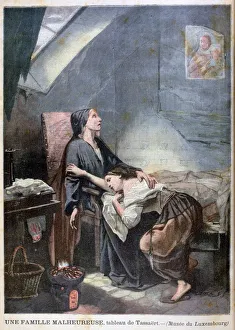Octave Tassaert Collection
Octave Tassaert was a talented French painter known for his emotionally charged portraits and genre scenes
All Professionally Made to Order for Quick Shipping
Octave Tassaert was a talented French painter known for his emotionally charged portraits and genre scenes. Born in 1800, Tassaert's work often depicted the struggles of everyday life, particularly focusing on poverty and social injustice. His use of light and shadow created a sense of drama and depth in his paintings, drawing viewers into the emotional world he portrayed. Tassaert's career was marked by both critical acclaim and personal tragedy. Despite receiving recognition for his work at prestigious exhibitions, he struggled with mental health issues throughout his life. This inner turmoil is reflected in the intensity of emotion captured in many of his paintings. One of Tassaert's most famous works is "The Prodigal Son," which depicts a young man returning home after squandering his inheritance. The painting conveys a powerful sense of regret and redemption, showcasing Tassaert's ability to evoke complex emotions through art. Although Octave Tassaert faced challenges during his lifetime, his legacy lives on through the timeless beauty and emotional resonance of his paintings. His unique style continues to inspire artists and art lovers alike, reminding us of the power of art to capture the human experience in all its complexity.












